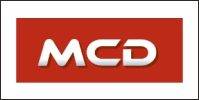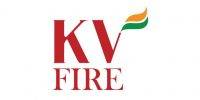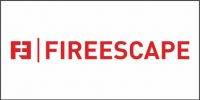 It’s no secret that drilling for oil is a dangerous job. In the complex industry of oil and gas, there’s a lot that could go wrong. One of the more serious risks for this industry is the potential for fires and explosions.
It’s no secret that drilling for oil is a dangerous job. In the complex industry of oil and gas, there’s a lot that could go wrong. One of the more serious risks for this industry is the potential for fires and explosions.
But, there’s hope. There are ways you can prevent fires from happening at your worksite.
Preventing fires with a Hot-Works Program
According to OSHA, between 2005 and 2015, there were 85 fire-related deaths in the oil and gas industry. Of those, 28 occurred due to improper hot-work practices.
So, how can you prevent fires from happening in your organization? By recognizing and understanding the hazards associated with hot work.
Welding, cutting, brazing, and grinding create a significant risk of fires and explosions. This type of work generates hot sparks and slag. Those can then come into contact with nearby combustibles and flammable gases. Here are some basic ways you can prevent hot-work incidents:
Having and using a hot-work permit
A written permit is required in certain situations. But, it’s a good idea to use them for all your hot-work activities anyway. The permit ensures that all necessary safety precautions are in place. It also helps lower the risk of fire or explosion.
Performing hot-work in a safe location
Remove all combustibles from the area before conducting hot-work. Whenever possible, perform the work in an area that won’t interfere with other workers.
 Wearing the proper PPE
Wearing the proper PPE
Always wear FR clothing when performing hot work. It is the responsibility of the employer to provide this to the employee. Further, FR clothing should be maintained and kept in good condition.
Using fire blankets to protect nearby equipment from sparks and slag
If you cannot move combustibles or nearby equipment out of the way, lay fire blankets over them. This will protect them and prevent them from catching fire.
Having fire extinguishers nearby and ready to use
Employees should always know where to find the nearest fire extinguisher. This is even more critical when performing hot-work. Hoses and other suppression equipment can work too.
Assigning a fire watch for all hot-work activities
A fire watch should always be present for hot-work activities. The fire watch should know how to sound the alarm in the event of a fire. They should also know to only extinguish a fire when it is small and contained to one area. OSHA requires the fire watch remain in place for at least 30 minutes after the work is complete.
OSHA and the National STEPS Network recently created a Hazard Alert. This resource provides guidance on preventing hot-work incidents in the oil fields.
Preventing fires by understanding ignition sources
What’s another common cause of fires and explosions in the oil and gas industry? The ignition of flammable vapors from mobile engines and auxiliary motors.
OSHA states that 27 of the 85 fire-related deaths resulted from working with engines and motors.
Vehicles and motorized equipment present ignition hazards when located near flammable vapor sources. This is why it’s important to conduct fire risk assessments. This also creates the need to safely position all motorized equipment during drilling, servicing, and production operations.
Some of the ignition sources you’ll find on-site in the oil fields are:
- Internal-combustion engine sparks
- Open flames from any source
- Cigarettes, or smoking
- Welding operations
- Electric power tools
- Two-way radios
- Vehicles with catalytic converters
- Portable generators
There are many ways to protect your employees from these ignition source hazards. First, you’ll need to put in place several rules and management practices. Next, you’ll need to train your employees how to recognize these hazards. Finally, you’ll want to consider using engineering controls and monitoring equipment.
How often does your company conduct Fire Risk Assessments?
Establishing rules and safe work practices is critical to safety. Fire Risk Assessments are a great way to ensure that safe work practices are being followed. They will help you to confirm if the risk of fire has been minimized.
During a Fire Risk Assessment, you’ll first want to identify potential sources of flammable vapors. These sources include wellbores, tanks, trucks, pumps, and more. Then, you’ll need to determine if these vapors are a safe distance from any ignition sources. You’ll also need to establish safe areas, boundaries, and entry routes for all vehicles and motorized equipment.
Other safe work practices you can put in place include:
- Provide spark arrestors for internal-combustion engines
- Prohibit vehicles with catalytic converters from the immediate vicinity of the rig
- Prohibit open flames from the vicinity of the rig
OSHA also recommends conducting a Job Hazard Analysis, or JHA, at daily shift meetings. All employees should take part in the JHA to review the specific tasks and hazards they may face.
Training Your Employees
Train your employees to recognize hazards specific to the oil and gas industry. For instance, they should know what it means when an engine “over revs” or starts “running away.” When this happens, the engine is in a gas cloud and at high risk for a catastrophic explosion. If this occurs, employees need to immediately evacuate the area.
Employees should also be aware of the content and hazards of the equipment they are working on. The oil industry uses very complex equipment that young or new employees may not be familiar with. Take the time to train them properly before letting them loose. Want more info on the hazards of worker in the oil industry? Check out our blog, “The Dangerous Life of a Roughneck: The truth about oil drilling safety hazards.”
Engineering Controls
You may want to consider installing automated systems for your mobile engines. Shutdown systems, spark arrest systems, and intake flame arrestors are all good options. They automatically respond to hazardous situations.
You can also use monitoring equipment to detect flammable gases. A popular option is a multi-gas monitor. You can mount these in a permanent location or wear them as a portable device. Many organizations in the oil and gas industries rely on this type of equipment.
Want more information on how to prepare for these hazards in the oil industry? Refer to this Hazard Alert on mobile engines and auxiliary motors.
More Ways to Prevent Fires in Oil and Gas
Here are some more ways that you can better protect your employees:
Perform Routine Audits and Inspections
We like to believe that we’re prepared for fires and incidents. Routine audits and inspections are a good way to verify if that’s the case. Inspect your areas that are at high risk for fire and explosion. Determine a path forward if you find that there’s room for improvement.
Provide and Maintain Fire Suppression Equipment
Make sure that you have enough fire suppression equipment on hand. You’ll also need to maintain this equipment by doing regular inspections. Immediately replace any equipment that has damage or defects.
Train Employees on Safe Work Procedures
Give your employees routine training on the topics of fire and explosion safety. Train them on how to use fire extinguishers and other equipment. Make sure they understand what’s required of them when performing hot-work. Test their knowledge on the different ignition sources they may face in the oil field.
Use an Emergency Alert System
Develop an emergency action plan that explains what to do in the event of a fire or explosion. Employees need to know of an emergency immediately so they can respond appropriately. Do you have a mass notification system in place? Alarms, radios, and mobile devices are all great options.
Perform an Occasional Fire Drill
The best way to determine if you’re prepared for an emergency is to run a drill. This will help employees prepare for a real-life situation. And you’ll learn where you can make improvements to your emergency action plan.
The oil and gas industry can be a dangerous line of work. So, put these best practices into use. You’ll reduce the risk of fire-related injuries from happening at your worksite.
Let’s do our part, and get our workers home safe.




















































